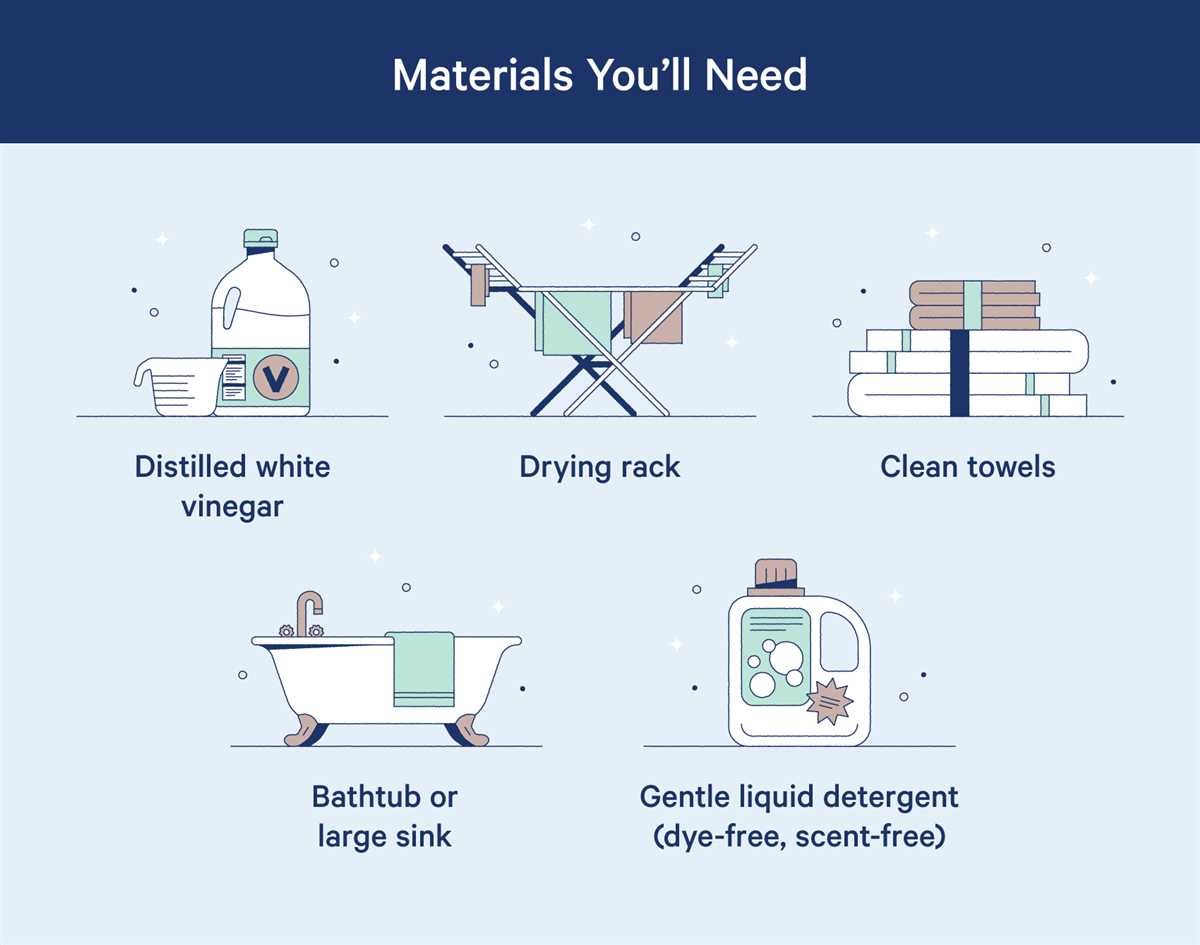




A quilt is a cherished possession that not only provides warmth and comfort but also adds beauty to the décor of a bedroom. Whether it’s a quilt that has been handed down from generation to generation or a new one that you’ve just purchased, it’s important to take proper care of it to ensure its longevity. One of the key aspects of quilt maintenance is knowing how often to wash it.
The frequency of washing a quilt depends on various factors, such as its usage and exposure to dirt and stains. Generally, it is recommended to wash your quilt every 3 to 6 months. However, if you have pets that sleep on the bed or if you or your family members have allergies, it may be necessary to wash it more frequently.
When it comes to washing your quilt, it’s important to follow the manufacturer’s instructions. Most quilts can be machine washed, but some may require professional cleaning. Before washing, make sure to inspect the quilt for any loose threads or weak seams. If you notice any, mend them before washing to prevent further damage.
It’s also important to choose the right detergent for washing your quilt. Opt for a mild, gentle detergent that is suitable for delicate fabrics. Avoid using bleach or harsh chemicals as they can damage the fabric and colors of the quilt. Additionally, it’s a good idea to wash your quilt in cold water to prevent shrinkage and color fading.
Importance of Regular Cleaning
Regular cleaning of your quilt is essential for maintaining its overall quality and extending its lifespan. Here are a few reasons why regular cleaning is important:
- Eliminating dirt and dust: Quilts often collect dust, dirt, and other allergens over time. Regular cleaning helps remove these particles, ensuring a clean and healthy environment.
- Preventing the growth of pests: Quilts can attract pests like bed bugs, moths, and dust mites. These pests can damage the fabric and cause health issues. Regularly washing and cleaning your quilt helps prevent their growth and infestation.
- Maintaining the quilt’s appearance: Dirt and stains can accumulate on the quilt, leading to a dull and unattractive appearance. Regular washing and cleaning can help retain the quilt’s vibrant colors and overall aesthetic appeal.
- Preserving the fill material: Quilts often have fill material like cotton or down feathers. Over time, these fill materials can become compressed or clumped together, affecting the quilt’s insulation and comfort. Regular cleaning helps maintain the fill’s loft and overall integrity.
- Preventing odors: Quilts can develop unpleasant odors due to sweat, spills, or general usage. Regular cleaning helps eliminate these odors, leaving your quilt fresh and pleasant-smelling.
- Ensuring hygiene: Quilts frequently come into contact with our bodies and can harbor bacteria or germs. Regular cleaning helps maintain good hygiene and prevents the spread of illness.
Overall, regular cleaning of your quilt is crucial for maintaining its cleanliness, comfort, and longevity. It is recommended to follow the washing instructions provided by the manufacturer or consult a professional cleaner for specific care guidelines.
Why Washing Your Quilt Is Essential for Your Health and Wellbeing
Keeping your quilt clean and fresh is not only important for maintaining its appearance but also for your health and wellbeing. Here are a few reasons why regular washing of your quilt is essential:
1. Removes Allergens and Dust Mites
Your quilt collects various allergens and dust mites over time. These allergens can trigger allergic reactions and cause respiratory problems, especially for individuals with asthma or allergies. Washing your quilt regularly helps in removing these allergens, ensuring a healthier living environment.
2. Eliminates Bacteria and Germs

With daily use, your quilt can become a breeding ground for bacteria and germs. These microorganisms can lead to skin infections, allergies, and other health issues. Washing your quilt at regular intervals helps in killing the bacteria and germs, keeping you protected and healthy.
3. Reduces Odours
Over time, your quilt can develop unpleasant odours due to sweat, body oils, and other factors. Regular washing helps in eliminating these odours, ensuring a fresh and pleasant-smelling sleeping environment.
4. Maintains the Quilt’s Quality
Regular washing helps in maintaining the quality and lifespan of your quilt. By removing dirt, oils, and stains, you prevent the buildup of residue that can weaken the fabric and cause it to deteriorate faster. Proper care and cleaning of your quilt will help it last for many years to come.
5. Provides a Better Sleep Experience
A clean and fresh quilt enhances the overall sleep experience. Sleeping in a hygienic environment can improve sleep quality and contribute to better overall health and wellbeing. Knowing that your quilt is clean and free from allergens can help you relax and enjoy a restful night’s sleep.
In conclusion, washing your quilt regularly is essential for maintaining a clean and healthy sleeping environment. It helps in removing allergens, bacteria, and odours, while also preserving the quilt’s quality and providing a better sleep experience. Make sure to follow the manufacturer’s instructions for washing and drying your quilt to ensure its longevity and effectiveness.
Determining Washing Frequency
Determining how often to wash your quilt depends on several factors, including its usage, the materials used, and any specific instructions from the manufacturer. Here are some guidelines to help you determine the appropriate washing frequency for your quilt:
Usage
The frequency at which you should wash your quilt may depend on how frequently you use it. If you use your quilt as a decorative piece that is rarely touched or exposed to dirt, you may only need to wash it once or twice a year. However, if you use your quilt daily or have it in a high-traffic area, you may need to wash it more often, such as once a month or every few months.
Materials
The type of materials used in your quilt can also affect how often it should be washed. Some materials, such as cotton or synthetic fibers, may be more durable and easier to clean, allowing for more frequent washing. On the other hand, quilts made with delicate or antique fabrics may require special care and less frequent washing to preserve their condition.
Instructions
Always check the manufacturer’s instructions or care label for specific guidance on washing your quilt. Some quilts may have specific cleaning instructions, such as hand-washing only or dry cleaning. Following these instructions will help maintain the quilt’s quality and longevity.
Considerations
In addition to the factors mentioned above, there are a few more considerations to keep in mind when determining the washing frequency of your quilt:
- If your quilt becomes visibly soiled or stained, it should be washed as soon as possible to prevent the stains from setting in.
- Quilts stored for a long period of time without proper protection may accumulate dust, dirt, or even pests. In such cases, a thorough washing may be necessary before use.
- Over-washing your quilt can cause unnecessary wear and tear, so it’s important to find a balance between cleanliness and preservation.
By considering these factors and guidelines, you can determine the appropriate washing frequency for your quilt and ensure that it stays clean and well-maintained for years to come.
Factors to Consider When Deciding How Often to Wash Your Quilt
1. Frequency of Use: One of the primary factors to consider is how often you use your quilt. Quilts that are used daily or regularly may need to be washed more frequently than those that are used less frequently. If you use your quilt as a decorative piece or only during certain seasons, it may not need to be washed as often.
2. Allergies: If you or someone in your household has allergies or sensitivities to dust mites, pet dander, or other allergens, it may be necessary to wash your quilt more frequently. Regular washing can help remove allergens and keep your quilt clean and fresh.
3. Environment: The environment in which you use your quilt can also impact how often it needs to be washed. If you live in a dusty or dirty environment, such as a construction zone or a rural area, your quilt may accumulate more dirt and grime and require more frequent washing.
4. Stains and Spills: Accidents happen, and if your quilt gets stained or spilled on, it may need immediate attention and washing. Some stains can be difficult to remove if left for too long, so it’s important to clean them as soon as possible.
5. Fabric Care Instructions: Different types of quilts require different care. Always check the fabric care instructions provided by the manufacturer or consult with a professional cleaner to determine the appropriate washing frequency for your specific quilt. Some quilts may require dry cleaning or special care, while others can be safely machine washed.
6. Personal Preference: Ultimately, how often you choose to wash your quilt may come down to personal preference. If you prefer a fresh and clean sleeping environment, you may opt to wash your quilt more often. On the other hand, if you enjoy the comfort and familiarity of a well-worn quilt, you may choose to wash it less frequently.
By considering these factors and assessing the specific needs of your quilt and household, you can determine an appropriate washing frequency that will keep your quilt clean, fresh, and in good condition for years to come.
Proper Quilt Washing Techniques
Washing a quilt is important to keep it clean and fresh, but it’s essential to use proper techniques to ensure the quilt’s longevity and preservation. Here are some guidelines to follow when washing your quilt:
1. Check the quilt’s care instructions
Before washing a quilt, always check the care instructions provided by the manufacturer. Different quilts may have specific requirements, such as certain water temperatures or types of detergents to use.
2. Pre-treat stains
Take the time to pre-treat any stains on the quilt before washing. Gently dab or spot-clean the stain using a mild detergent or stain remover appropriate for the fabric.
3. Use a gentle detergent
When washing your quilt, opt for a gentle detergent that is designed for delicate fabrics. Avoid using harsh chemicals or bleach, as they can cause damage and fading to the quilt’s colors.
4. Choose the right water temperature

Choose a water temperature that is suitable for the quilt’s fabric. Some quilts can be washed in cold water, while others may require warm or even hot water. Refer to the care instructions or follow general guidelines for washing delicate fabrics.
5. Use a gentle or hand wash cycle
To minimize agitation and potential damage, select a gentle or hand wash cycle on your washing machine. This will help prevent excessive pulling or tearing of the quilt’s fabric.
6. Avoid excessive spinning

When using a washing machine, set the spin cycle to the lowest or gentlest option to minimize stress on the quilt. Excessive spinning can stretch or distort the fabric, affecting the quilt’s appearance and structure.
7. Air dry or tumble dry on low
After washing, avoid using high heat to dry the quilt as it can cause shrinkage or damage. If possible, air dry the quilt by laying it flat or hanging it up. If using a dryer, select a low heat or delicate setting.
8. Avoid direct sunlight
When drying the quilt, avoid exposing it to direct sunlight for an extended period. Sunlight can fade the fabric and cause the colors to dull over time. Instead, choose a shaded or well-ventilated area for drying.
9. Store properly when not in use
Once the quilt is clean and dry, store it properly to prevent damage. Fold it neatly and place it in a storage bag or cotton cover to protect it from dust, pests, and moisture.
By following these proper quilt washing techniques, you can ensure that your quilt stays clean, fresh, and well-preserved for years to come.
Step-by-Step Guide on How to Wash Your Quilt the Right Way
1. Check the care instructions
Before washing your quilt, always check the care instructions provided by the manufacturer. Some quilts may have specific care requirements, such as hand washing or dry cleaning only.
2. Pre-treat stains
If your quilt has any stains, it’s recommended to pre-treat them before washing. Follow the instructions on the stain remover product and allow it to sit for the recommended time before moving on to the next step.
3. Choose the right washing method
Based on the care instructions and the condition of your quilt, choose the appropriate washing method. This could include machine washing, hand washing, or dry cleaning.
4. Machine washing
If your quilt is machine washable, use a front-loading machine or a top-loading machine without an agitator to prevent damage. Set the machine to a gentle or delicate cycle and use a mild detergent. Avoid using bleach or fabric softeners.
5. Hand washing
If hand washing is recommended, fill a bathtub or a large basin with lukewarm water and add a small amount of mild detergent. Gently agitate the quilt in the water, paying extra attention to stained areas. Drain the soapy water and refill with clean water to rinse the quilt.
6. Dry cleaning
If your quilt requires dry cleaning, take it to a professional cleaner who specializes in handling delicate fabrics like quilts. They have the expertise and equipment to clean your quilt without causing any damage.
7. Drying the quilt
After washing, gently squeeze out any excess water from the quilt. Avoid wringing or twisting the quilt, as this can cause it to lose its shape. Lay the quilt flat on a clean surface or hang it to air dry. Avoid direct sunlight and heat sources, as they can fade or shrink the fabric.
8. Fluffing and storing
Once the quilt is completely dry, fluff it gently to restore its loft and shape. You can use your hands or a fabric brush to do this. Make sure the quilt is completely dry before storing it to prevent mold and mildew growth. Store the quilt in a cool, dry place away from direct sunlight and moisture.
By following these steps, you can ensure that your quilt is washed properly and remains in good condition for years to come.
Drying and Storing Your Quilt
Once you have washed your quilt, it is important to properly dry and store it to maintain its quality and longevity. Here are some helpful guidelines:
Drying:
- Air drying is the best method for drying your quilt.
- Spread your quilt on a clean, flat surface, making sure it is evenly spread out.
- Avoid direct sunlight, as it can cause fading and damage to the fabric.
- Rotate the quilt every few hours to ensure even drying.
- Do not wring or twist the quilt, as it can cause distortion and damage.
- Depending on the size and thickness of your quilt, it may take several hours or even days to fully dry. Patience is key.
Storing:
- Before storing your quilt, make sure it is completely dry to prevent mold and mildew growth.
- Clean and dry the storage area to ensure it is free of dust, moisture, and pests.
- Ensure the quilt is folded or rolled loosely to prevent creases and stress on the fabric.
- Using acid-free tissue paper, gently wrap the quilt to protect it from dust and light.
- Avoid storing your quilt in plastic bags, as they can trap moisture and promote mildew growth.
- Store your quilt in a cool, dry place, away from direct sunlight and extreme temperature fluctuations.
- Periodically check on your stored quilt to ensure it is in good condition and make any necessary adjustments to the storage environment.
By following these tips, you can ensure that your quilt remains clean, safe, and well-preserved for years to come.
FAQ
How often should I wash my quilt?
It is recommended to wash your quilt every 3-6 months, depending on usage and personal preference. Washing it too frequently can cause unnecessary wear and tear, while waiting too long can lead to a buildup of dirt and allergens.
Can I wash my quilt in a washing machine?
Yes, you can wash your quilt in a washing machine, as long as it fits comfortably and the machine can handle the weight. Make sure to use a gentle cycle and mild detergent to protect the fabric and keep the colors from fading.
What if my quilt is too large for the washing machine?
If your quilt is too large for the washing machine, you have a few options. You can take it to a laundromat and use a commercial-sized washing machine, hand wash it in a bathtub or large basin, or consider taking it to a professional cleaner who specializes in quilts.
How should I dry my quilt after washing?
It is best to air dry your quilt to avoid any potential damage from high heat. You can hang it outside on a clothesline or lay it flat on a clean surface indoors. If you prefer to use a dryer, set it on a low or delicate setting and remove the quilt while it is still slightly damp to prevent shrinkage.
What if my quilt has stains or spills on it?
If your quilt has stains or spills on it, it is important to treat them as soon as possible. Blot the stain gently with a clean cloth to absorb any excess liquid, then use a mild detergent or stain remover specifically designed for quilts. Follow the instructions on the product and wash the quilt as usual.
How often should I wash my quilt?
It is recommended to wash your quilt every 3-6 months, depending on its condition and usage. Regular washing will help keep it clean and fresh.












